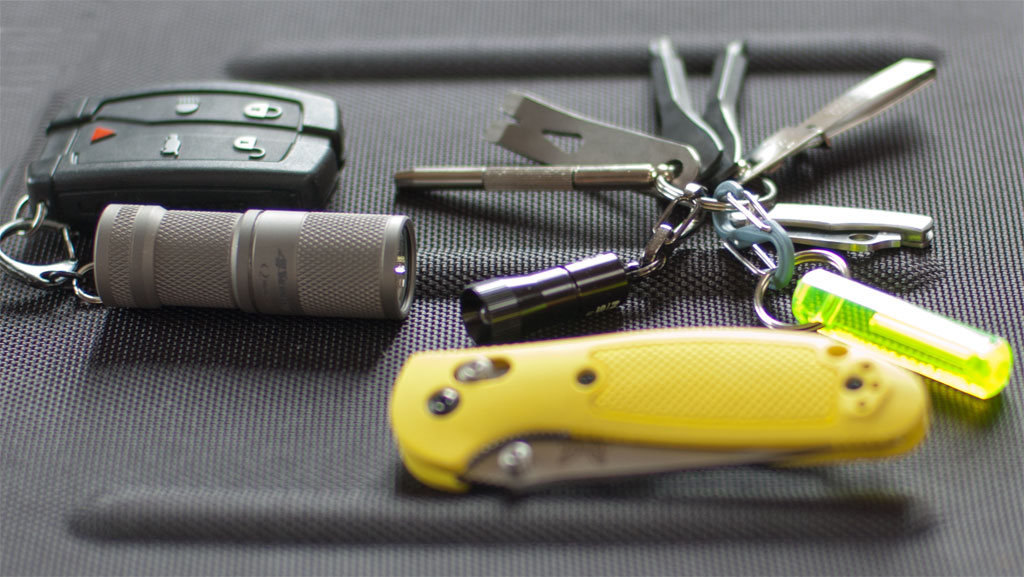
Advertisement
Urban preppers face a unique set of challenges compared to preppers in rural areas. But this doesn’t mean it’s impossible to prep in the city.
If you’re an urban prepper, you need to be creative so you can find ways to get ready before SHTF in a smaller home or apartment. (h/t to Survivopedia.com)
When disaster strikes and you decide to bug in or bug out, the following tips will help you survive.
Monitor the news
Keeping one eye on news reports will give you the advantage you need before a disaster occurs or before civil unrest breaks out in the city.
Watch news reports on TV, listen to radio broadcasts or learn how to use a HAM radio so you can also communicate with other preppers when SHTF.
Grow your own food
Knowing how to grow, cook and preserve your own food will help you survive a long-term survival scenario. Two of the best ways to start a food supply is by setting up a survival stockpile and starting a container garden. (Related: Urban prepping 101: How to grow medicinal herbs in an apartment.)
When starting a survival stockpile, choose foods that your family can eat for days on end and items that have a long shelf life, like beans or canned food.
Detailed below are the minimum soil depths for healthy plant growth. Note that you can grow a plant in less soil with a self-watering planter.
- 4 to 5 inches of soil – Basil, chives, coriander, lettuce, radishes and other salad greens.
- 6 to 7 inches of soil – Asian greens, bush beans, garlic, kohlrabi, onions, mint, peas and thyme.
- 8 to 9 inches of soil – Carrots, chard, cucumber, eggplant, fennel, leeks, parsley, peppers, pole beans, rosemary and spinach.
- 10 to 12 inches of soil – Beets, broccoli, dill, lemongrass, okra, potatoes and summer squash.
Find a clean water source
Storing water may be difficult if you live in a small apartment.
With limited space, you may need to fill up your bathtub or any large container with tap water or use portable water filters and gather rainwater.
Have backup power for your home
In a long-term survival scenario, you will need to have an alternative way of cooking and heating your home.
If you plan on bugging in, get a solar cooker and heating sources that don’t make noise or bright light to avoid unwanted attention when SHTF.
Self-defense: Guns and ammunition
Once you decide on a firearm for self-defense, stock up on ammo and learn how to use your weapon well so you can protect your family.
Finalize an emergency plan for your family
Whether you plan to bug in or bug out when SHTF, you need a detailed emergency plan for your family.
When drafting your emergency plan, account for the disasters you’re planning for and let each family member know their specific roles. Once your plan is finalized, schedule regular drills to ensure everyone knows where to go and what to do when SHTF.
Bugging in
Before you bug in, you need to:
- Monitor the news for updates. If things get worse, you may need to evacuate.
- Stock up on supplies that will last for at least three months.
- Gather water before municipal utilities stop working.
- Have a way of cooking and preparing food, heating and generating electricity.
- Prep a basic first-aid kit for minor emergencies.
- Fortify your home.
Bugging out
Before you bug out, you need to:
- Find a secure bug-out location.
- Memorize possible escape routes.
- Set up a bug-out bag for each family member.
- Turn utilities off before leaving.
- Keep your bug-out car well-maintained and stocked with supplies.
- Establish meeting points for your escape routes.
- Have a means of communicating with everyone.
Learn first aid
Preppers should learn basic first aid skills like CPR and wound dressing. Sign up for first aid classes as possible and attend an EMT course.
Prep your bug-out bag
Keep your bug-out bag within reach so you and your family don’t waste too much time getting ready before you need to bug out.
Know your way around the city
Level up your preparedness by looking for hidden paths around the city.
Familiarize yourself with major roads and intersections, back alleys, and how to reach your bug-out location from anywhere in the city without using the main roads. You shouldn’t rely on your phone for navigation because that might not be an option when SHTF.
Knowing your way around the city ensures that you won’t get lost or waste time if you need to reach your loved ones immediately.
Learn to jumpstart a car
You can run or walk if you’re bugging out, but this may not be a safe option in an urban environment, particularly if you’re not familiar with the safest routes or if you’re not fit enough to travel on foot.
When disaster strikes, you may need to use certain skills like jumpstarting a car to ensure your survival. If you face roadblocks or other obstacles that force you to abandon your bug-out vehicle, you can keep going if you know how to jump-start a car.
But before you use this tactic as a last resort, there are several factors to consider, such as:
- Is the vehicle is well-maintained and does it have a full gas tank?
- Do you know basic car maintenance?
- If you don’t want to jumpstart someone’s car, do you have access to an alternative method of transportation like a bicycle?
As an urban prepper, you must be creative when stocking up on food supplies or finding a clean source of water before SHTF. Before disaster strikes, set up your preps so you can bug in safely and prepare an emergency plan to ensure that your family stays safe if you decide to bug out.
Sources include:
Advertisement
Advertisements
















